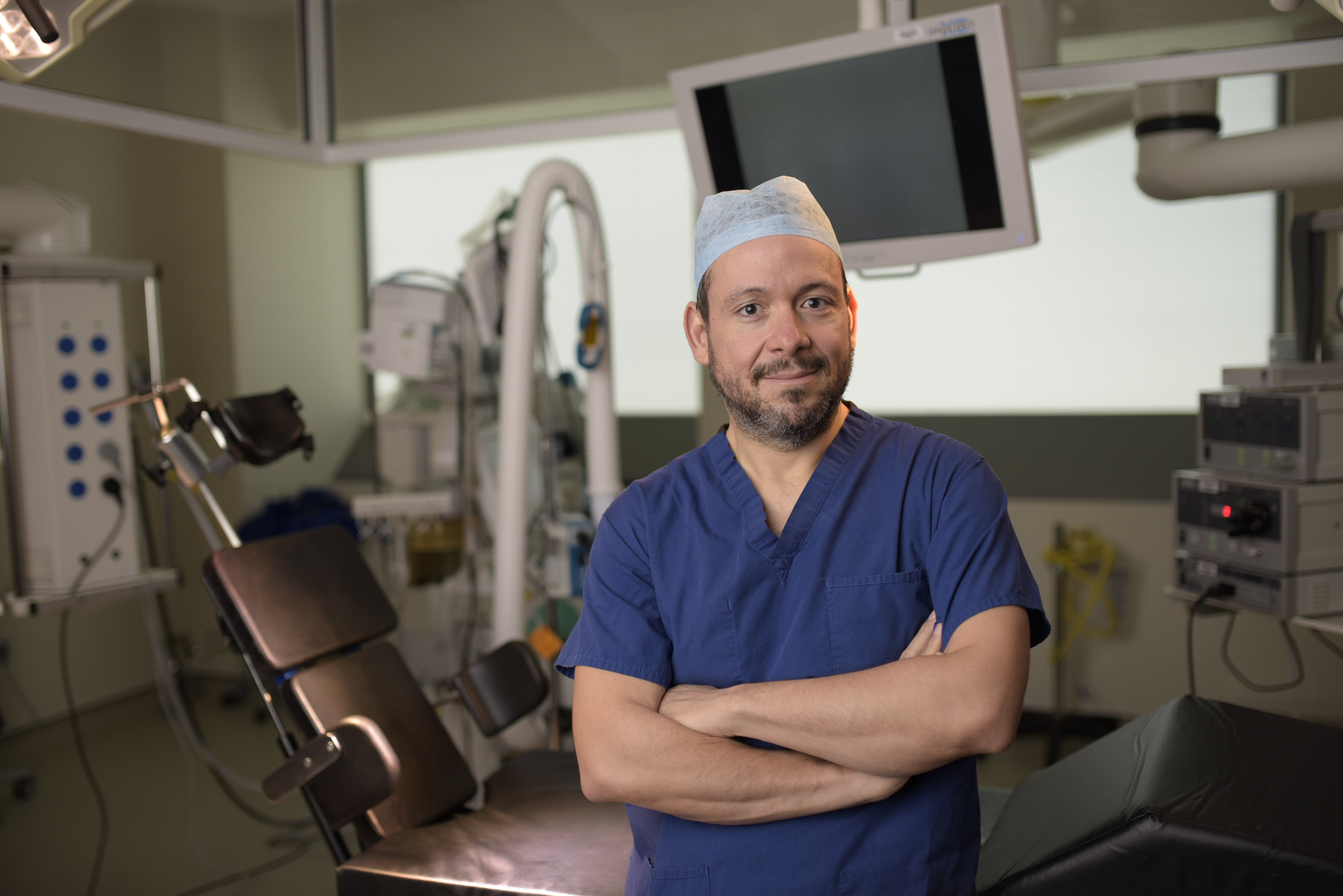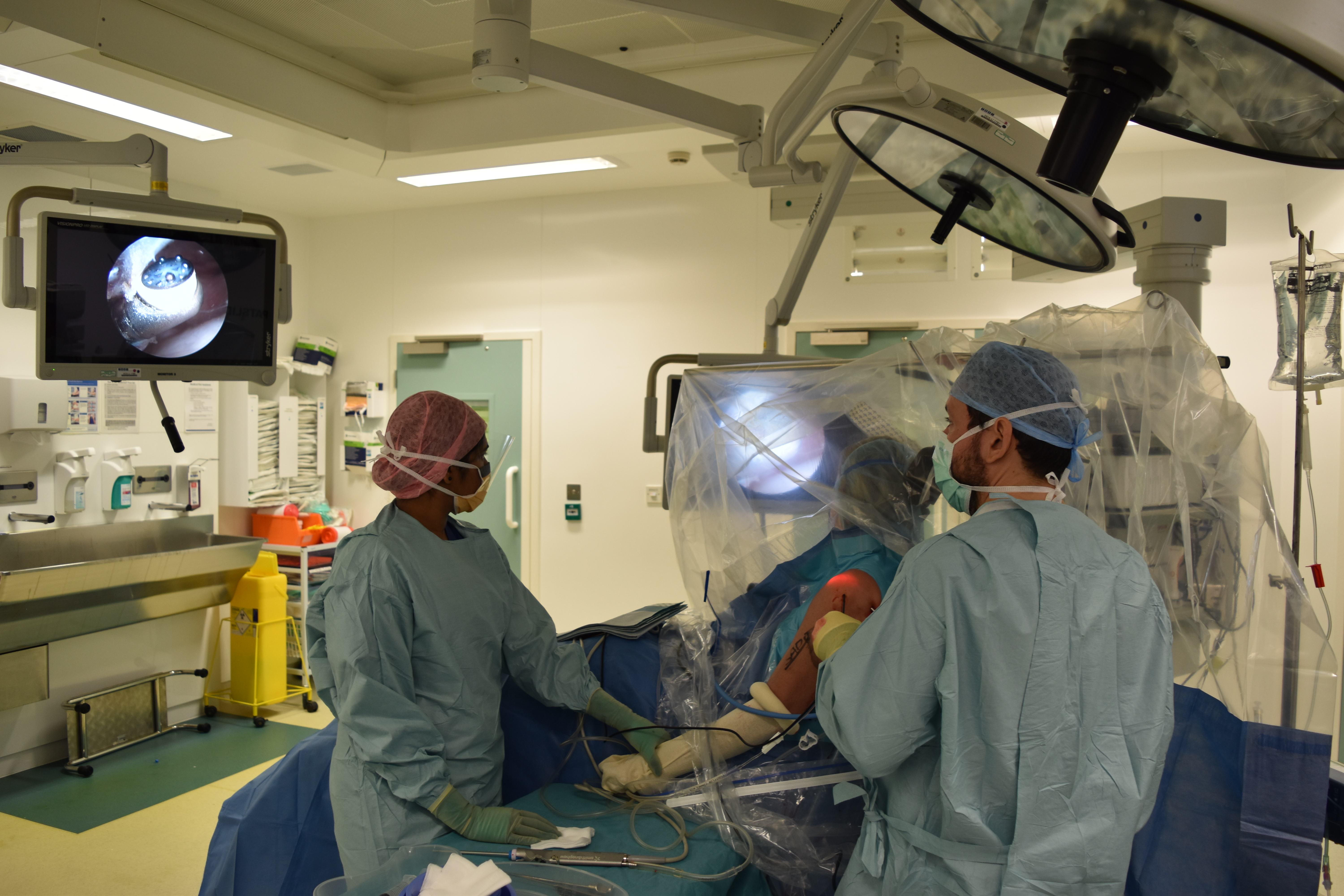
Awake surgery is not new. Patients have been undergoing surgery while awake for years. It is common to have many lower limb operations under spinal anaesthesia, Caesarean sections are often performed under epidural anaesthesia, and even some neurosurgery is performed with patients awake. Developments in regional anaesthesia have made awake shoulder and elbow surgery safe and possible for many years. While doctors and patients alike wouldn’t bat an eyelid about having awake hip or knee surgery, awake shoulder and elbow surgery is only performed routinely in a few centres where regional anaesthesia enthusiasts, anaesthetists and surgeons, collaborate to deliver this service.
I am always amazed how many patients, GPs and physiotherapists have not heard of awake shoulder and elbow surgery as an option despite there being centres throughout the UK where these procedures are regularly performed.
What are awake shoulder and elbow surgery?
Historically all shoulder and elbow surgery was performed with the patients under general anaesthetic, and for most shoulder surgery the patients are sat up in the “beach chair” position so that the heart has to pump blood against gravity to the brain and the rest of the body while anaesthetised. Regional anaesthesia, which involves putting local anaesthetic around the nerves in the neck, is often added as a method of providing pain relief during and after the operation.
Over the years, regional anaesthesia has improved with the help of ultrasound guidance so that now it is possible to fully anaesthetise the pain fibres in the nerves that supply the arm allowing the patients to have their operation comfortable without the need for a general anaesthetic. The pain relief provided during the operation can then last up to 24 hours after the operation.
For longer procedures, or in patients who are particularly anxious, sedation can be given so that although they are not under general anaesthetic, they are drowsy enough that they are unaware of the procedure and don’t remember it afterwards. Sedation can last for some time after the operation so may delay recovery when compared to regional anaesthesia alone.
Procedures that are suitable for awake surgery:
The following are some common procedures that are suitable for awake shoulder and elbow surgery
- Arthroscopic rotator cuff repair
- Arthroscopic capsular release
- Arthroscopic shoulder stabilisation
- Arthroscopic excision of the acromioclavicular joint
- Elbow arthroscopy
- Cubital Tunnel release
Procedures that are very long or require muscle relaxation may not be suitable for awake shoulder and elbow surgery as this often requires a general anaesthetic to assist with breathing and patients may find it difficult to sit still for long procedures.

Why would you recommend awake shoulder and elbow to patients?
Awake shoulder and elbow surgery offer several benefits to patients. The most obvious benefit is avoiding the risks of general anaesthesia, which may also include post-operative vomiting and nausea. With awake shoulder and elbow surgery, patients can often eat and drink immediately after their operation. For patients undergoing awake shoulder surgery in the “beach chair” position, the heart is not anaesthetised as it pumps against gravity with the blood pressure at normal levels so there is a much lower risk of heart attacks or strokes during the operation. For patients who are the too high risk for a general anaesthetic, regional anaesthesia may be their only safe option for having their shoulder or elbow surgery; we are therefore able to treat sicker patients who would have otherwise had to suffer in pain as they were considered unfit for a general anaesthetic.
By avoiding the drugs used in general anaesthetics, patients can often leave hospital much quicker than after a general anaesthetic – and good pain relief often means a good first-night sleep, and minimal use of opiate drugs. Opiate painkillers such as morphine have many side effects that can harm patients or slow their recovery, so we try to use either very short-acting or low dose opiates during awake surgery operations and the post-operative recovery period.
Patients undergoing awake shoulder and elbow arthroscopy (key-hole surgery) can often see their operations happening on a screen. While most patients may be queasy or nervous about this, in my experience even the most squeamish patients end up looking at the screen and are fascinated by being able to understand their body, their injury or disease, and the treatment that is performed. This insight is very empowering for patients. Having a good understanding of what is done and what was found gives patients the confidence to move on with their rehabilitation. Most general anaesthetic patients often have to wait until the first outpatient clinic to find out what was discovered and what the surgeon did, as they are often too drowsy on the day of their operation to remember what the surgeon may have told them. I find my patients are more confident and compliment with their post-operative physiotherapy when they are awake during surgery, and this gives them better results.
For me, I personally enjoy that I get to spend time getting to know my patients and educating them about their shoulder or elbow problem. Most patients only get to see their surgeon for 20-30 minutes at a time during clinic appointments whereas I can often spend over an hour in the operating theatre with my patients getting them through, what is for them, a major source of concern and anxiety. It is a privilege to be able to do this for my patients and for them to be awake and understand what we do during surgery.
Are there risks to regional anaesthesia and will I feel pain?
Regional anaesthesia does have risks of nerve injury or puncture of the lung, but with ultrasound guidance and in the hands of a skilled anaesthetist who specialises in regional anaesthesia, these risks are greatly reduced. I only work with anaesthetists skilled in performing these procedures as we have to work as a close-knit team to get patients safely and comfortably through the operation.
There is always a possibility of feeling some discomfort during an operation, as a regional anaesthetic may not fully block all the nerve fibres. The team will, therefore, have on standby fast, but short-acting, powerful painkillers that work within seconds to keep patients comfortable throughout.
If done by a competent team who perform these procedures routinely, awake shoulder and elbow surgery can be done comfortably and safely for patients. Several of my patients have come back to have their other shoulder or elbow operated under regional anaesthesia and this is the biggest testament to the procedure being well received by patients.
Awake shoulder and elbow surgery isn’t for every patient, can’t be performed for every operation, and isn’t for every surgeon. However for surgeons like myself who are experienced with, and passionate about, awake shoulder and elbow surgery, and have great anaesthetic and surgical teams to back them up, this is a great option for most patients.
To find out more patient information about the awake shoulder and elbow surgery please visit the patient information section of my website where there are links to videos and patient information leaflets about this technique.
This article is for information only and should not be used for the diagnosis or treatment of medical conditions. myHealthSpecialist makes no representations as to the accuracy or completeness of any of the information in this article or found by following any link from this article. Please consult a doctor or other healthcare professional for medical advice.
